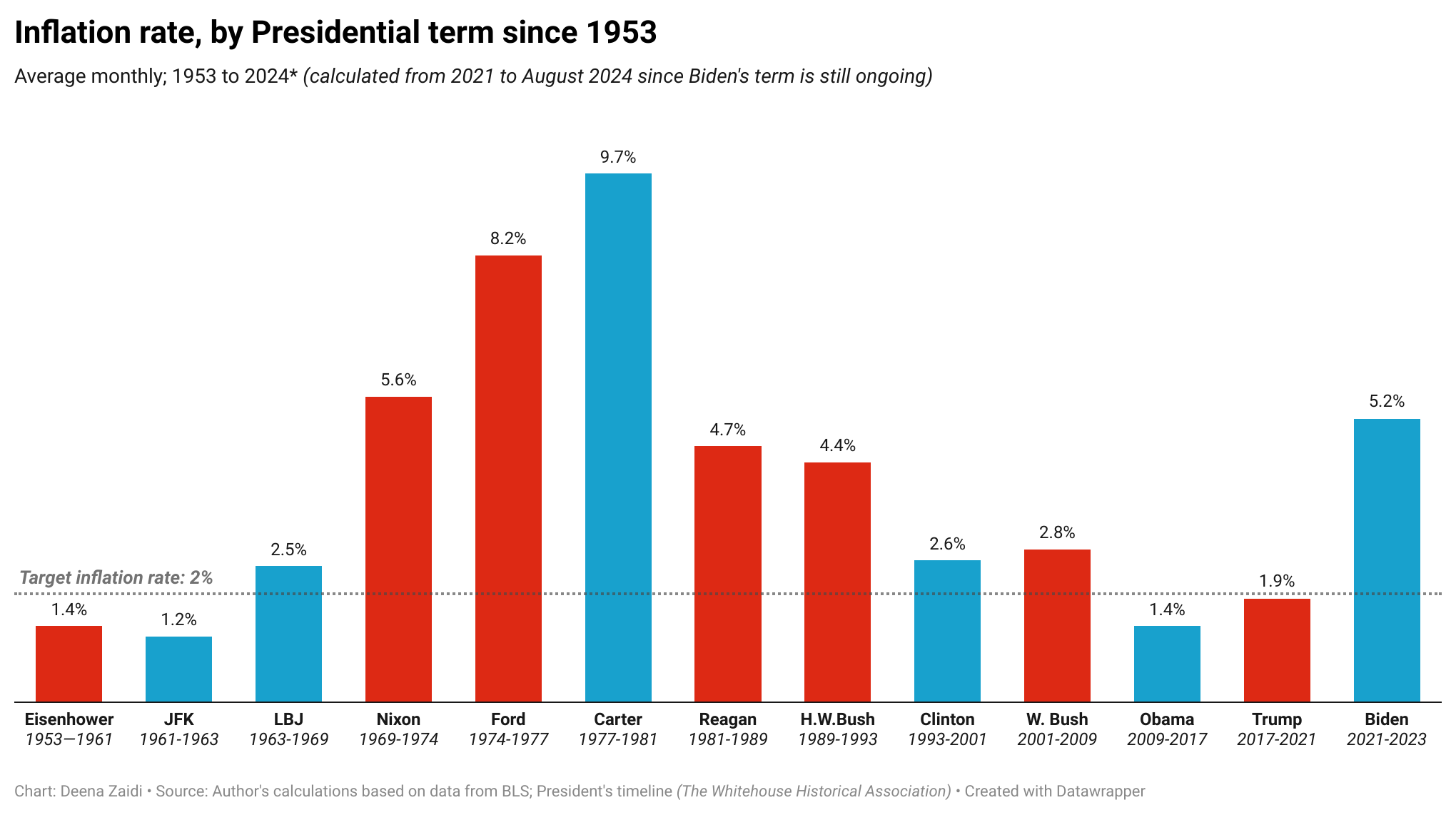Inflation is not only a heated topic but also a sensitive one.
Changes in prices are a tangible way of understanding how expensive things around us are and it becomes even more important to understand how these trends looked under each President.
Here’s the analysis of the monthly inflation numbers under different presidencies, starting with the most recent.
By the numbers: The current average YOY inflation rate under the Biden administration is 5.2% (as of August 2024) and the monthly inflation hovered widely between 1.4% and 9%.
- His presidency (2021-present) saw a significant increase in inflation due to multiple factors such as the supply chain disruptions compounded by the Russia-Ukraine war.
- Post-pandemic, inflation began to rise sharply in 2021 under the Biden administration, peaking in 2022.
- However, in August 2024, inflation fell to 2.5%.
- Before 2021, Donald Trump’s (2017-2021) presidency saw a low average YOY inflation Rate of 1.9% and the monthly inflation hovered roughly between 0.2% and 2.5%.
- Trump’s term saw continued low inflation until the COVID-19 pandemic.
- The highest inflation occurred under Jimmy Carter’s presidency (1974-1977), with inflation peaking at 14.6% in March and April of 1980.
- High inflation along with stagnant growth led to stagflation and this was worsened by the 1979 oil crisis.
- Before Carter, Gerard Ford inherited high inflation and launched the “Whip Inflation Now” program.
But it is important to understand that the cause of inflation isn’t always black and white.
- The incoming first-term U.S. President has little control over the economy he/she inherits (except when they were vice presidents for the prior administration).
- However, they still have strong control over the policies that are key to a thriving economy.
- Unforeseen events, wars, or even a pandemic can undermine the most well-planned regulations and policies.
- Under a new presidential term, these events have spillover effects, making identifying the exact cause and effect difficult.
So, high prices are typically not one party’s fault.
